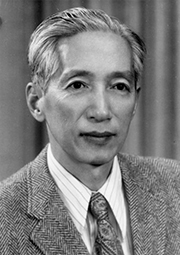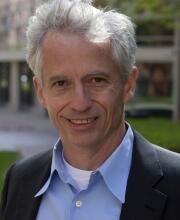CONTACT
Department of Chemistry
Todd Wehr Chemistry, 101
1414 W Clybourn St
PO Box 1881
Milwaukee, WI 53233
(414) 288-3515
Problem with this webpage?
Report an accessibility problem
Any other problem, contact muchem@marquette.edu.
 Kazuo Nakamoto was born in Kobe, Japan. He received his B.S. and D.Sc. from Osaka University and remained at Osaka as a member of the faculty for an additional four years, except for the two years which he spent at Iowa State University working in the laboratory of Robert E. Rundle as a Fulbright Scholar. In 1958 he joined the faculty at Clark University, moving to Illinois Institute of Technology in 1961 and in 1969 he became the first Wehr Professor of Chemistry at Marquette University.
Kazuo Nakamoto was born in Kobe, Japan. He received his B.S. and D.Sc. from Osaka University and remained at Osaka as a member of the faculty for an additional four years, except for the two years which he spent at Iowa State University working in the laboratory of Robert E. Rundle as a Fulbright Scholar. In 1958 he joined the faculty at Clark University, moving to Illinois Institute of Technology in 1961 and in 1969 he became the first Wehr Professor of Chemistry at Marquette University.
Professor Nakamoto directed the research of more than 85 graduate students and postdoctoral associates and published more than 210 papers and 15 review articles. He was a pioneer in the use of metal isotopes to elucidate the involvement of metals in low frequency vibrations in metallic complexes, a discovery that helped fuel the rapid growth in the developing field of bioinorganic chemistry. He then turned his attention to biological problems and began a vigorous research program dealing with heme-related compounds. He was also amongst the first to use matrix isolation techniques to prepare and characterize unstable species, including the biologically relevant ferryl heme complexes, an important intermediate in many oxidative heme enzymes. His interest also included DNA and the process of intercalation. Using oligonucleotides synthesized to include specific sequences, he established criteria that can be used to deduce the site specificity of these compounds. He was able to differentiate between exterior (groove) binding and interior (intercalation) binding through careful vibrational analysis.
In keeping with his life-long interest in communicating the excitement of science, he authored several influential texts in the field of spectroscopy, including his very famous 2-volume work on Infrared and Raman Spectra of Inorganic and Coordination Compounds, the sixth edition of which was issued in 2009, and in 2008 coauthored a new book entitled Drug-DNA Interactions: Structures and Spectra. Remarkably, his passion for science and dedication to accomplishment were clearly manifested, even up to the final weeks of his life, as he was continually pondering new points to include in planned future editions of his books. In spite of his great scientific success, he remained a genuinely modest man who will long be missed by the many of us who knew and admired him.
 The Department of Chemistry is pleased to announce that this year's Nakamoto Lecture will be given by Professor Eric Jacobsen, Harvard University and is title, "Selectivity and Generality in Asymmetric Catalysis. The lecture will be held at 4 pm on Friday, April 4, 2025 in room 121 of the Todd Wehr Chemistry Building.
The Department of Chemistry is pleased to announce that this year's Nakamoto Lecture will be given by Professor Eric Jacobsen, Harvard University and is title, "Selectivity and Generality in Asymmetric Catalysis. The lecture will be held at 4 pm on Friday, April 4, 2025 in room 121 of the Todd Wehr Chemistry Building.